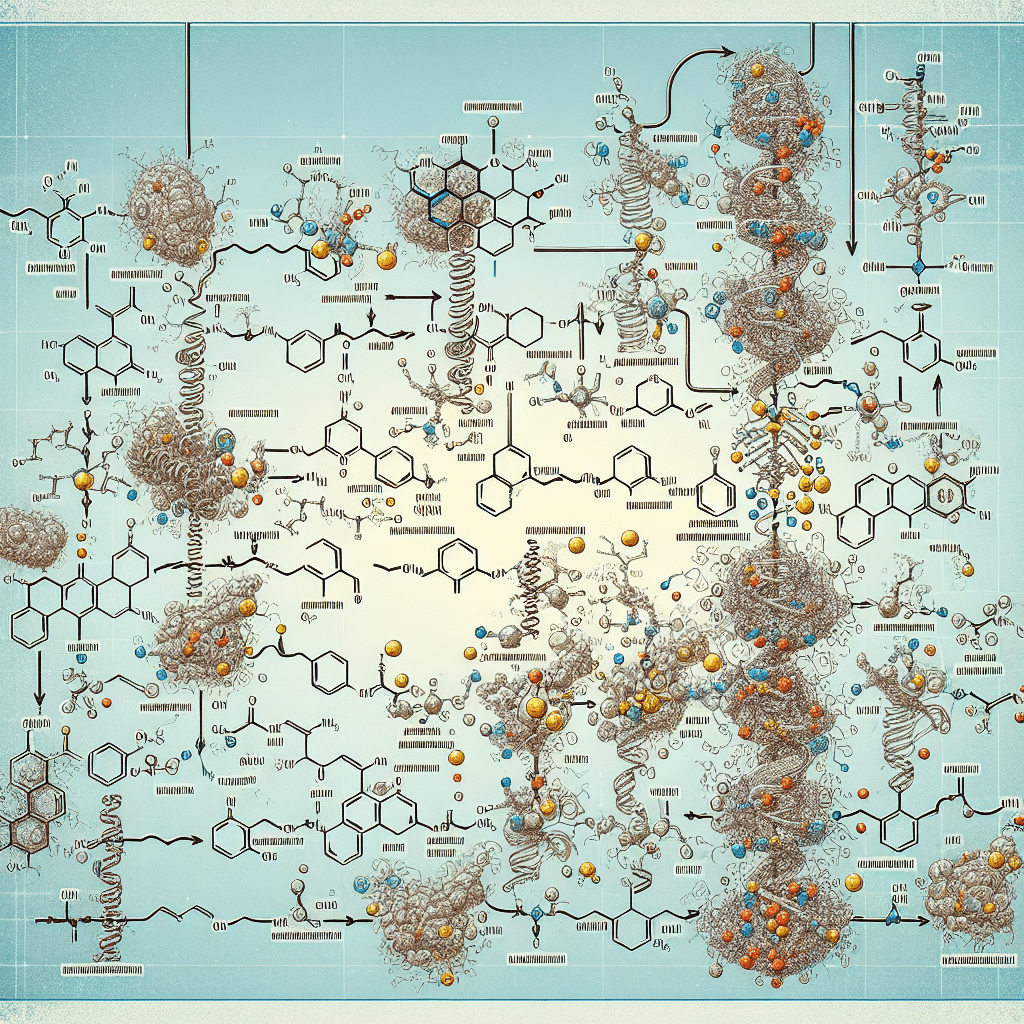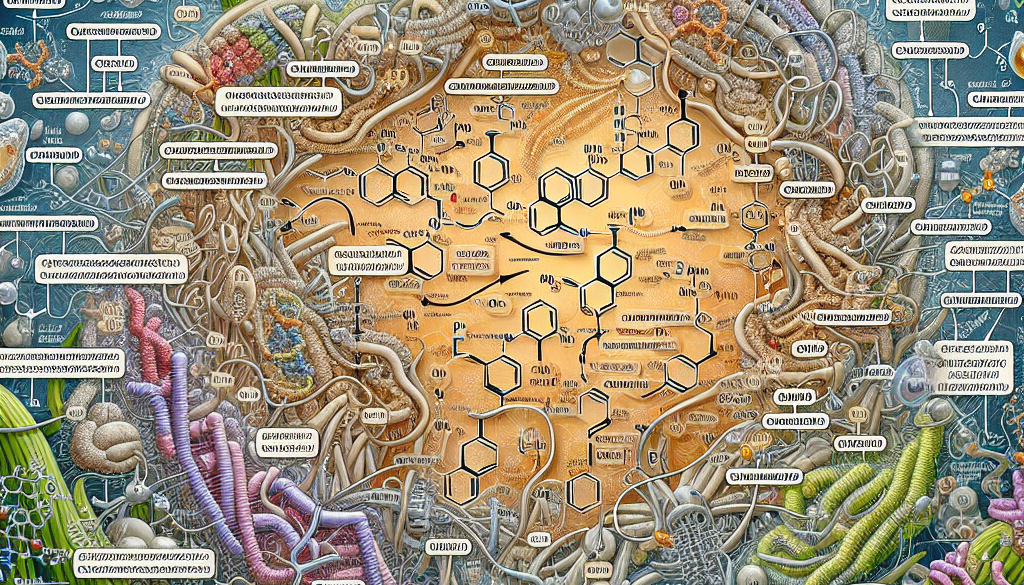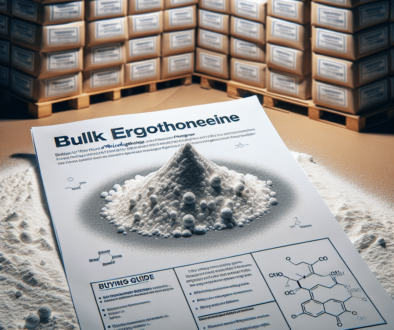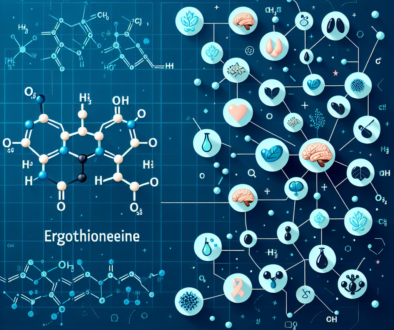The Mechanistic Pathway of Ergothioneine Biosynthesis: A Detailed Study
-
Table of Contents
- Ergothioneine Biosynthesis: Unveiling the Mechanistic Pathway
- The Significance of Ergothioneine
- Understanding the Biosynthetic Pathway
- Genetic Regulation of Ergothioneine Biosynthesis
- Applications and Implications
- Case Studies and Research
- Statistics and Current Trends
- Conclusion: Key Takeaways of Ergothioneine Biosynthesis
- Discover ETprotein’s High-Quality Protein Products
Ergothioneine Biosynthesis: Unveiling the Mechanistic Pathway

Ergothioneine (ET) is a naturally occurring amino acid derivative that has captured the interest of the scientific community due to its potential as a powerful antioxidant and cytoprotective agent. Found in various organisms, including bacteria, fungi, and animals, ergothioneine plays a crucial role in protecting cells from oxidative damage. Understanding the mechanistic pathway of ergothioneine biosynthesis is not only fascinating from a biochemical perspective but also has significant implications for biotechnology and medicine. This article delves into the intricate process of ergothioneine biosynthesis, exploring the enzymes involved, the genetic regulation, and the potential applications of this knowledge.
The Significance of Ergothioneine
Ergothioneine stands out among antioxidants for its unique sulfur-containing imidazole ring and its ability to accumulate in the human body, particularly in cells exposed to high levels of oxidative stress. Its presence in the diet, primarily through mushrooms and certain meats, has been associated with various health benefits, including reduced inflammation and protection against age-related diseases. The biosynthesis of ergothioneine is a complex process that involves multiple steps and enzymes, which we will explore in detail.
Understanding the Biosynthetic Pathway
The biosynthesis of ergothioneine is a multi-step process that begins with the amino acid histidine. The pathway involves several key enzymes that catalyze the transformation of histidine into ergothioneine. Here is a step-by-step breakdown of the process:
- Step 1: EgtD – The enzyme EgtD catalyzes the first step, which is the methylation of histidine to form hercynine.
- Step 2: EgtE – Hercynine is then acted upon by the enzyme EgtE, which adds a cysteine molecule to form hercynylcysteine sulfoxide.
- Step 3: EgtB – The next enzyme, EgtB, is responsible for the oxidative cyclization of hercynylcysteine sulfoxide to produce the thiolactone intermediate.
- Step 4: EgtC – Finally, EgtC catalyzes the formation of ergothioneine from the thiolactone intermediate by incorporating an additional sulfur atom.
Each of these enzymes plays a critical role in the pathway, and their activity is tightly regulated to ensure efficient production of ergothioneine.
Genetic Regulation of Ergothioneine Biosynthesis
The genes encoding the enzymes involved in ergothioneine biosynthesis are often found in a cluster, suggesting a coordinated regulation of their expression. In bacteria and fungi, the egt gene cluster is regulated by various environmental factors, including the presence of reactive oxygen species (ROS) and sulfur availability. This regulation ensures that ergothioneine is produced in response to oxidative stress, providing a protective mechanism for the organism.
Applications and Implications
The understanding of ergothioneine biosynthesis has far-reaching implications. For instance, by manipulating the egt gene cluster, scientists can enhance the production of ergothioneine in microorganisms, leading to increased yields for commercial extraction. Additionally, the knowledge of this pathway can aid in the development of ergothioneine-enriched foods or supplements, which could have significant health benefits.
Case Studies and Research
Several studies have been conducted to elucidate the ergothioneine biosynthetic pathway. For example, research on the bacterium Mycobacterium smegmatis has provided insights into the function of the egt genes and their role in ergothioneine production. Similarly, studies on the fungus Neurospora crassa have revealed the importance of ergothioneine in protecting against oxidative damage.
Statistics and Current Trends
The demand for ergothioneine as a dietary supplement has been growing, with the global market expected to expand significantly in the coming years. The antioxidant properties of ergothioneine and its potential health benefits are driving this trend, with more consumers seeking natural ways to protect against oxidative stress and age-related diseases.
Conclusion: Key Takeaways of Ergothioneine Biosynthesis
In conclusion, the mechanistic pathway of ergothioneine biosynthesis is a complex and finely tuned process that involves several key enzymes. Understanding this pathway provides valuable insights into how organisms protect themselves against oxidative stress and offers potential applications in biotechnology and medicine. The ability to enhance ergothioneine production in microorganisms could lead to more accessible sources of this potent antioxidant, benefiting human health and well-being.
Discover ETprotein’s High-Quality Protein Products
If you’re interested in incorporating high-quality protein products into your diet or product line, consider ETprotein’s offerings. Their range of organic bulk vegan proteins and L-(+)-Ergothioneine (EGT) products are of the highest quality, catering to various industries and consumer needs. Whether you’re looking for supplements to support your health and wellness goals or ingredients for your food and beverage products, ETprotein has you covered with their non-GMO, allergen-free, and high-purity protein solutions.
About ETprotein:
ETprotein, a reputable protein and L-(+)-Ergothioneine (EGT) Chinese factory manufacturer and supplier, is renowned for producing, stocking, exporting, and delivering the highest quality organic bulk vegan proteins and L-(+)-Ergothioneine. They include Organic rice protein, clear rice protein, pea protein, clear pea protein, watermelon seed protein, pumpkin seed protein, sunflower seed protein, mung bean protein, peanut protein, and L-(+)-Ergothioneine EGT Pharmaceutical grade, L-(+)-Ergothioneine EGT food grade, L-(+)-Ergothioneine EGT cosmetic grade, L-(+)-Ergothioneine EGT reference grade and L-(+)-Ergothioneine EGT standard. Their offerings, characterized by a neutral taste, non-GMO, allergen-free attributes, with L-(+)-Ergothioneine purity over 98%, 99%, cater to a diverse range of industries. They serve nutraceutical, pharmaceutical, cosmeceutical, veterinary, as well as food and beverage finished product distributors, traders, and manufacturers across Europe, USA, Canada, Australia, Thailand, Japan, Korea, Brazil, and Chile, among others.
ETprotein specialization includes exporting and delivering tailor-made protein powder and finished nutritional supplements. Their extensive product range covers sectors like Food and Beverage, Sports Nutrition, Weight Management, Dietary Supplements, Health and Wellness Products, and Infant Formula, ensuring comprehensive solutions to meet all your protein needs.
As a trusted company by leading global food and beverage brands and Fortune 500 companies, ETprotein reinforces China’s reputation in the global arena. For more information or to sample their products, please contact them and email sales(at)ETprotein.com today.














